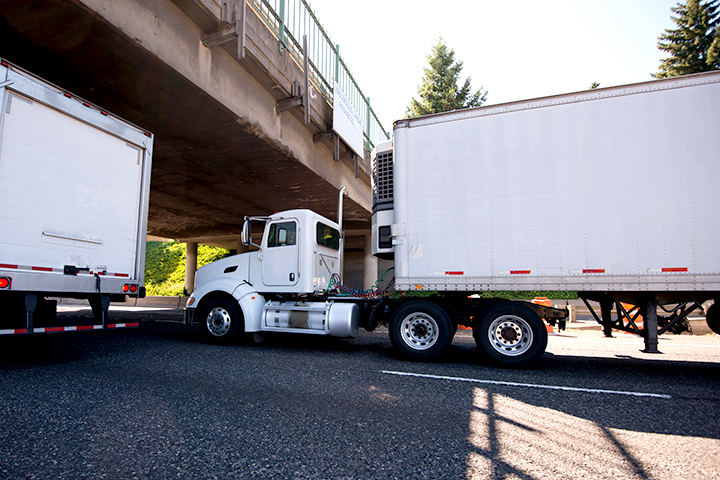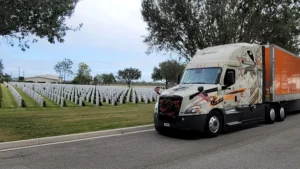ALBANY, N.Y. — A collaborative effort between the New York State Police, the New York State Department of Transportation (NYSDOT) and the Governor’s Traffic Safety Committee, which began Nov. 9 and continues through Nov. 15, aims to help prevent commercial trucks from striking low bridges.
According to a release from New York Gov. Andrew Cuomo’s office, New York State averages about 220 bridge strikes per year, resulting in the potential for injury for the truck driver and nearby motorists, costly repairs to the bridge itself, and substantial traffic disruptions. There have been more than 1,100 bridge strikes on New York roadways since 2015.
As part of the enforcement effort, state troopers will focus active patrols in areas where there have been documented bridge strikes by large commercial vehicles. These bridge strikes are most likely to occur on roadways with low railroad bridges and on New York State parkways. Commercial trucks are banned on parkways, but operators guided by consumer-grade GPS devices can end up on parkways — and when that occurs, a bridge strike is inevitable, according to the release. Because consumer GPS devices do not include information about low bridges, truck drivers are required to use commercial-grade GPS systems that provide details about low bridges and restricted routes.
In addition to increased enforcement, a tip card and other materials have been developed to educate drivers — especially drivers of box trucks and other commercial vehicles — about the hazards of low bridges and how to avoid them. The educational materials will be available to the public at highway rest areas, the state’s Department of Motor Vehicles offices and truck-rental facilities. The educational materials warn operators of commercial vehicles that they are prohibited from New York State parkways because of low bridges; stress the need to be aware of signs and pavement markings; and urge the use commercial GPS systems that account for height restrictions.
“Bridge strikes continue to be a problem across the state, endangering the safety of motorists, disputing traffic and causing damage,” said Keith Corlett, New York State Police superintendent. “These targeted patrols are part of an effort with our partners at DOT and the Governor’s Traffic Safety Committee to raise awareness about this issue and reduce and eventually eliminate bridge strikes statewide.”
Since 2013, NYSDOT has participated in a regional Bridge Strike Task Force in the Hudson Valley. Because of this multi-agency effort, NYSDOT added new signage and pavement markings along the Hutchinson River, Saw Mill River, Cross County and Sprain Brook parkways and ramp entrances. Over-height vehicle detection systems have been installed at multiple locations across the state. `
New fines and penalties for those driving commercial vehicles on New York State parkways went into effect Sept. 3, 2020. Penalties for commercial vehicles on parkways are broken down by weight class, and there are also penalties for over-height vehicles. The maximum fines and penalties are as follows:
Less than 10,000 pounds:
- First violation: $250 and/or 15 days in jail.
- Second violation within 18 months: $500 and/or 45 days in jail.
- Third or subsequent violation within 18 months: $750 and/or 90 days in jail.
Between 10,000 and 26,000 pounds:
- First violation: $350 and/or 15 days in jail.
- Second violation within 18 months: $700 and/or 45 days in jail.
- Third or subsequent violation within 18 months: $1,000 and/or 90 days.
Over 26,000 pounds:
- First violation: $700 and/or 15 days in jail.
- Second violation within 18 months: $1,500 and/or 45 days in jail.
- Third or subsequent violation within 18 months: $2,000 and/or 90 days in jail.
Over-height vehicles:
- First offense: $1,000 and/or 30 days in jail.
- Second or subsequent offense: $2,000 and/or 60 days in jail.
The enforcement and education blitz coincides with the completion of a $3.8 million bridge replacement project of the Old State Road Bridge over the NYS Thruway (I-90) in Albany County. The project, which began in March, was completed within budget and a month ahead of schedule. Since 2016, the Thruway Authority’s capital program has supported the replacement or rehabilitation of 133 bridges across its 570-mile system.
“While maintaining strong, safe transportation infrastructure is critical for keeping our roadways safe, it’s also an important piece in growing local economies, and this is why New York has made the strengthening of bridges and roadways a top priority,” Cuomo said. “Not only does the new Old State Road Bridge improve the safety and reliability of the Thruway, but by increasing its clearance, we are helping prevent troublesome traffic delays which impact travel and commerce. When you combine this progress along with our new enforcement and education initiative, New York is taking a proactive approach towards improving safety for all those who travel our roads.”
The new overpass bridge, located between Exit 24 (Albany – I-87) and Exit 25 (Schenectady – I-890), had been subject to numerous over-height truck hits during the past several years, causing traffic disruptions on the Thruway mainline. The new bridge height will prevent similar incidents in the future with an increased clearance of 16 feet, 6 inches for traffic traveling on the NYS Thruway (I-90).
The bridge was constructed using 260,000 pounds of American-made structural steel, and its new driving surface and approaches were constructed using 1,000 cubic yards of concrete, as well as 1,000 tons of asphalt. To further strengthen safety, wider travel lanes and shoulders, as well as new safety guiderails, were implemented.
The Trucker News Staff produces engaging content for not only TheTrucker.com, but also The Trucker Newspaper, which has been serving the trucking industry for more than 30 years. With a focus on drivers, the Trucker News Staff aims to provide relevant, objective content pertaining to the trucking segment of the transportation industry. The Trucker News Staff is based in Little Rock, Arkansas.















